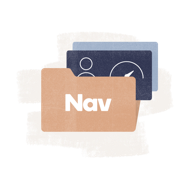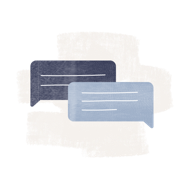Update:The President has signed the PPP Extension Act which extends the deadline to apply for PPP loans to August 8, 2020
The SBA CARES Act, including the Paycheck Protection Program, is now law. It includes some relaxed qualification criteria when compared to a traditional SBA 7(a) loan, making it a viable option for business owners seeking funding.
What is the Paycheck Protection Program?
The SBA Paycheck Protection Program is the official name of the $367 billion in funds allocated by congress and administered by the Small Business Administration (SBA). It’s part of the 7(a) loan program with the goal of providing low-interest loans with favorable terms to small businesses impacted by the current economic crisis caused by COVID-19.
How Do I Apply for the Paycheck Protection Program?
Unlike the Economic Injury Disaster Loans (EIDL), the Paycheck Protection loans don’t come directly from the SBA. Individual lenders, including many banks, credit unions, and some online lenders make these SBA guaranteed loans as part of the program. These lenders are preparing to accept applications for these loans, along with Nav.
Before you apply, you’ll need to make sure you have answers/documentation for some important information the lender will need to evaluate your SBA loan application. You will need to know much money do you need to borrow to meet your needs, including:
- Your payroll costs, including employee salary, wages and commissions, payment of tips, payments for vacation, parental, family, and sick leave, etc. These costs may also include the costs of group health benefits (including insurance premiums), payment of retirement benefits, payment of state and local tax assessment on employee compensation, an income for a sole proprietor or independent contractor not in excess of $100,000.
- Your utility expenses, defined as electricity, gas, water, transportation, and telephone or internet access for service that began before February 15, 2020.
To help work through the details of the initial application process, Nav has created an easy-to-use CARES Act SBA Loan Calculator to help you determine what you should apply for.
Will My Business Qualify for the Paycheck Protection Program?
To qualify for the Paycheck Protection Program, you must be a small business as defined by the SBA. This includes:
- Small businesses or non-profit 501(c)(3) organizations with 500 or fewer employees
- Small businesses, 501(c)(3) veteran’s organizations or tribal concerns that meet the SBA size standards
- Sole proprietors or independent contractors
Businesses in the food or hospitality industry (NAICS codes beginning in (72) may be eligible on a per location basis).
Normal affiliation rules for franchises or businesses receiving financial assistance from a Small Business Investment Company are waived.
In determining eligibility for these loans, the lenders must consider whether the business was in operation on February 14, 2020, and had employees for whom the borrower paid salaries and payroll taxes, or paid independent contractors (as reported on Form1099-MISC). An ‘employee’ includes individuals employed on a full-time, part-time, or other basis.
Additionally, “…individuals who operate under a sole proprietorship or as an independent contractor and eligible self-employed individuals shall be eligible,” according to the legislation. If your business falls into this category, you will need to provide documentation such as “payroll tax filings reported to the Internal Revenue Service, Forms 1099-MSC, and income and expenses from the sole proprietorship, as determined by the (SBA) Administrator and the (Treasury) Secretary.”
What Are the Loan Terms Offered Through the Program?
The maximum loan amount is the lesser of $10 million and 2.5 times the average monthly payroll costs (this is why the payroll calculation is so important) for the one year period before the loan was made, with consideration for any seasonality-based adjustments or a shorter period for businesses less than a year old. In other words, if you have been in business for less than a year or are a seasonal business, the nuance of your business will be taken into consideration.
The maximum loan term is one year for loans received before June 5, 2020 and five years for loans received after that date. The interest rate is 1% for any balances not forgiven.
Can Loans Through the Paycheck Protection Plan Be Forgiven?
These loans are available for forgiveness, but there are some conditions for which some loan forgiveness is available, but don’t assume forgiveness is automatic and any forgiveness (if available in your circumstance) will be based upon factors like your payroll costs, rent, utilities, and interest payments on debts you had previous to receiving the aid—and will go through a review with the lender.
Read: How to Apply for Forgiveness for Your Paycheck Protection Program (PPP) Loan
Cancelled indebtedness will not be included in your taxable income.
What About the Grant I’ve Heard About?
The Paycheck Protection Program does not include a grant. The advance of up to $10,000 is part of the Economic Injury Disaster Loan program. This grant will be subtracted from PPP for forgiveness purposes.
What Should I Do to Prepare my Application?
Gather payroll documentation and determine what you should apply for: This will include salaries and other related expenses outlined above. Nav’s CARES Act SBA Loan Calculator will help you determine the amount you may apply for.
Check your credit: Most lenders are not checking credit for PPP loans though a few have checked personal credit scores. You can check yours for free at Nav.com.
Please keep in mind this information is changing rapidly and is based on our current understanding of the programs. It can and likely will change. Although we will be monitoring and updating this as new information becomes available, please do not rely solely on this for your financial decisions. We encourage you to consult with your lawyers, CPAs and Financial Advisors. To review your real-time funding options with one of Nav’s lending experts, please contact us.
This article was originally written on March 30, 2020 and updated on July 6, 2020.



How do I know if my employer is getting this money and not passing it on to his workers?
I really hope you can help me out with some answers. I have other friends who Iknow are in same boat as I am in.
I am self-proprietor for 27 years, no employees, I don’t have a structured “draw” or “paycheck” Sssoooo my hometown bank (country club) is telling me I won’t qualify for either PPP or EIDL because I have a loss in 2019. I wish I had not filed my 2019 return knowing what I know now. Nonetheless bank has it as well as Fed. and Kansas. I made 61,000 and have a 9,500 loss.
None of the formulas or spreadsheets used to calculate my “Wages” works for my situation and the bank is saying the rules are not flexible to make exceptions for my situation.
We the family had a very bad year health wise plus some unbelievable bad luck so the last three months wife and I both couldn’t work. Lots of medical bills to.
Why cant they use our AGI as a calculating number? It seems it be the most over all fair for a small one man show that is a sole proprietor. I don’t feel depreciation should be included but what do I know Im a cabinet maker.
I can’t file unemployment , I can’t get any assistance. And yet I have to stay home and not work. I can’t get a second job or continue my main job to work my way out of this. Am I to just go out of business? My home is where my business is at.
Danny – Truly sorry to hear what you’ve been going through. For PPP if your Schedule C line 31 for 2019 showed a loss you won’t be eligible for PPP according to SBA. (Though that’s not clear from your comment. If you had a profit on line 31 of schedule C for 2019 you may want to look into applying for PPP.) Are you sure you can’t apply for Pandemic Unemployment Assistance? Have you considered applying for EIDL if Congress authorizes more funds? I’d recommend you visit our COVID Resource Center and read about these other programs in more detail.
Is there a place online to apply? I just found pdf format?
very informative and thank you for posting this. Our business is a partnership. We have one employee on payroll, The two partners take a cash draw from the company for the same amount every week. Do the cash draws count as payroll?
Thank you
Ted
I doubt cash withdrawals could be documented but you may want to read this article for more information: how to apply for PPP by business type